“Off-the-beaten-path” travel means exploring underrated, less-visited countries to discover authentic cultures and pristine nature away from big crowds. The top countries for such adventures include places like Kyrgyzstan, Namibia, and Laos. Each sees far fewer tourists than popular destinations, yet offers world-class landscapes (from alpine lakes to deserts) and rich local traditions for a truly unique journey.
Many of these hidden destinations receive under 5 million visitors a year, preserving an uncrowded, authentic feel. The table below provides a snapshot of each featured offbeat country, including its approximate pre-pandemic annual visitors and a notable highlight that sets it apart:
| Country | Annual Visitors (2019) | Unique Highlight |
|---|---|---|
| Kyrgyzstan | ~1.7 million | 90% mountainous terrain & nomadic culture |
| Oman | 3.5 million | Desert forts and the ancient Land of Frankincense |
| Albania | ~6.4 million | Untouched beaches & UNESCO Ottoman towns |
| Namibia | 1.6 million | Oldest desert (55+ million years) & towering dunes |
| Bolivia | 1.2 million | World’s largest salt flat (10,582 km²) |
| Nicaragua | 1.5 million | 19 active volcanoes & vast tropical lakes |
| Laos | 4.8 million | French-colonial charm & megalithic Plain of Jars |
Kyrgyzstan – Nomadic Mountains of Central Asia
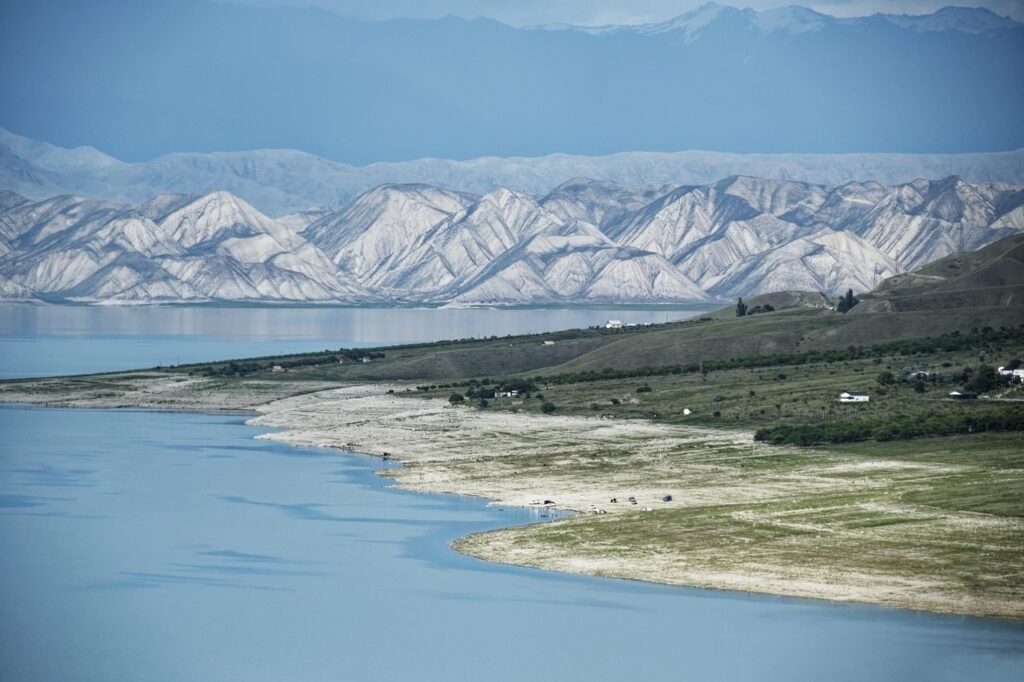
Kyrgyzstan is a land of soaring peaks and nomadic traditions tucked between China and Kazakhstan. Over 90% of Kyrgyzstan’s land is covered by mountains – part of the towering Tien Shan range known as the “Celestial Mountains.” This Central Asian republic remains far less visited than its neighbors (about 1.7 million tourists in 2019) and rewards intrepid travelers with pristine alpine scenery and warm hospitality. Travelers can ride horses through green jailoo (pastures), sleep in a traditional yurt under starry skies, and experience a way of life largely unchanged for centuries.
The country’s natural beauty is jaw-dropping. High-altitude lakes like Issyk-Kul – one of the world’s largest alpine lakes – reflect snow-capped peaks, and valleys are dotted with wildflowers in summer. In winter, snow leopards roam the remote slopes (Kyrgyzstan is a stronghold for this elusive cat). Culture here remains proudly nomadic: you might encounter eagle hunters using trained golden eagles for hunting or be invited to share kumis (fermented mare’s milk) in a felt tent. With few tourists around, these interactions feel genuine and unscripted. Kyrgyzstan’s rich Silk Road history is also visible in sites like the caravanserai of Tash Rabat and petroglyphs near Lake Issyk-Kul. It’s no surprise that Kyrgyzstan frequently tops lists of underrated travel destinations – it offers the majesty of the Himalayas or Rockies, but with a fraction of the crowds and a uniquely nomadic culture.
Despite its dramatic landscapes, Kyrgyzstan is relatively easy to explore. The government has a visa-free policy for many countries, and community-based tourism initiatives connect visitors with local guides and homestays. Whether you’re trekking to 24,000-foot (7,300 m) peaks, attending a yurt-stay festival, or watching a game of kok-boru (horseback polo with a goat carcass), Kyrgyzstan delivers a deeply immersive adventure. It’s truly a “Patagonia of Central Asia” that more travelers are only beginning to discover.
Oman – Arabian Desert Oasis Off the Radar
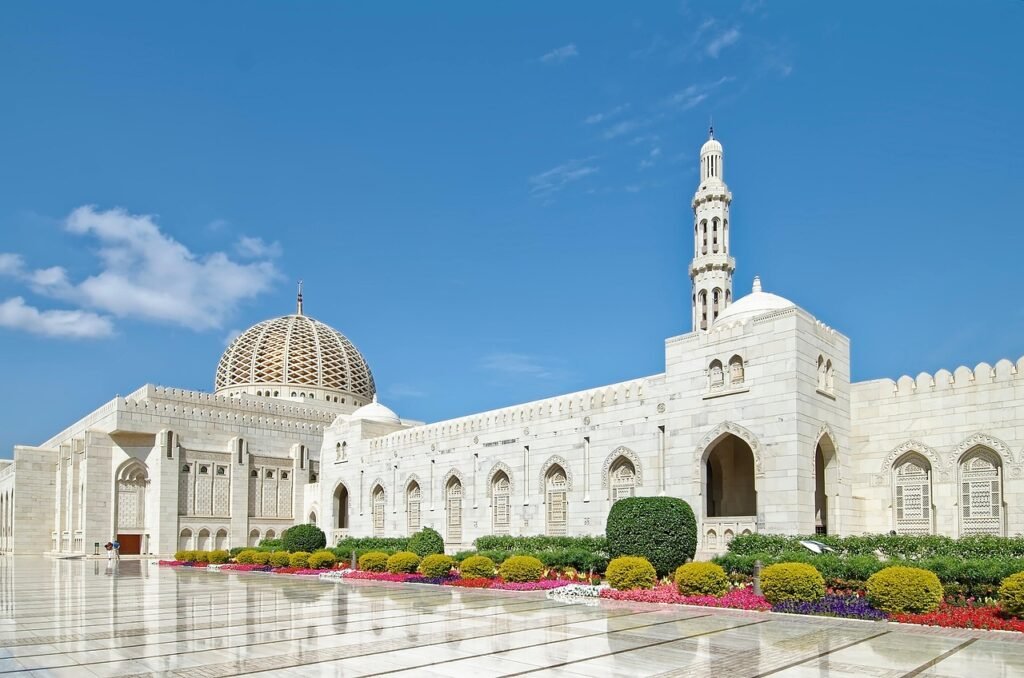
Oman offers an off-the-beaten-path experience in the Middle East, with a mix of ancient heritage and stunning desert landscapes. While nearby Dubai and Saudi Arabia draw far more visitors, Oman welcomed only about 3.5 million tourists in 2019. This Sultanate has consciously avoided mass tourism, preserving its traditional Arabian charm. Travelers here can wander through centuries-old forts, camp under the stars in the Empty Quarter, and swim in turquoise desert oases called wadis – often with hardly another soul around.
One highlight is Oman’s rich history as a center of the frankincense trade. In the southern region of Dhofar, the Land of Frankincense (a UNESCO World Heritage site) showcases ancient caravan oasis ruins and groves of frankincense trees that once made this land wealthy. In the north, the capital Muscat delights visitors with its clean white-washed architecture and the splendid Sultan Qaboos Grand Mosque. Unlike some glitzy Gulf capitals, Muscat retains a low-rise, traditional look with lively souqs (markets) selling silver jewelry and spices.
Oman’s natural beauty is equally compelling. The country is famed for the Wahiba Sands, vast rolling red dunes where Bedouin tribes still tend camels. At night, you can stay in a desert camp and marvel at an impossibly starry sky. In sharp contrast, the green Hajar Mountains rise to 9,800 feet (3,000 m) and hide terraced villages and cool canyons. Jebel Shams, Oman’s highest peak, overlooks “Arabia’s Grand Canyon” – a dramatic gorge with sheer cliffs. On the coast, the pristine beaches of the Musandam Peninsula and the turtle nesting grounds at Ras al Jinz offer unique wildlife encounters (it’s common to see green turtles laying eggs on Omani beaches at night).
Throughout Oman, safety and hospitality are paramount. The Omani people are known for warmly welcoming travelers, often with coffee and dates. As a stable, peaceful nation, Oman lets visitors enjoy Middle Eastern culture and desert adventure without the concerns found elsewhere. Whether exploring a 16th-century fort in Nizwa or sailing a traditional dhow boat in a Musandam fjord, you’ll feel like you’ve stepped into a quieter, more authentic Arabia – a true hidden gem for offbeat explorers.
Albania – Europe’s Hidden Mediterranean Gem
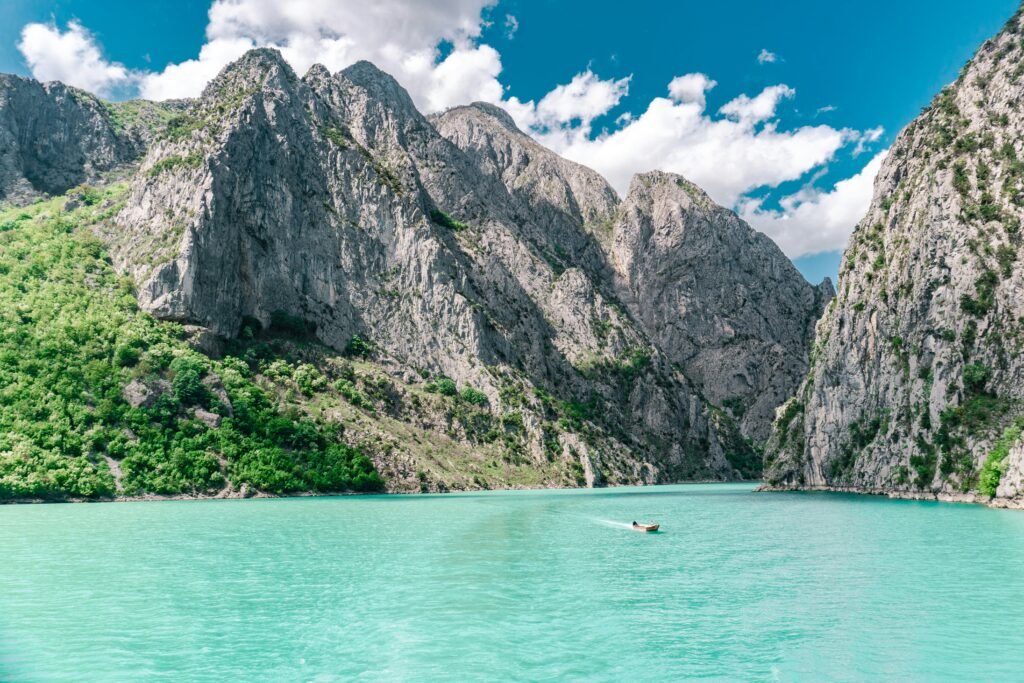
Albania is often called the last secret of the Mediterranean. Tucked between Greece and Montenegro, this small Balkan nation was isolated from the world for decades under a strict communist regime. The result? Albania’s beaches, mountains, and towns remained frozen in time and blissfully free of mass tourism. Even today, with around 6 million visitors a year (a modest number for Europe), traveling in Albania feels like discovering a bygone version of the Mediterranean – one with half-empty ruins and uncrowded rivieras.
In the south, Albania’s Ionian coastline – the famed Albanian Riviera – boasts crystal-clear waters and white pebble beaches that rival those of Italy or Greece. You can drive along winding coastal roads and stumble upon secluded bays framed by olive groves and limestone cliffs. Towns like Himara and Ksamil offer laid-back beach vibes at a fraction of the cost (and crowd) of better-known Mediterranean resorts. Inland, Albania is a haven for hikers. The rugged Accursed Mountains (Albanian Alps) in the north provide spectacular trekking between remote villages; the famous Valbona-to-Theth trail leads through alpine meadows and past waterfalls in a landscape so dramatic it feels nearly untouched.
Albania’s cultural heritage is just as rich. The country has not one but two UNESCO-listed historic towns: Gjirokastër and Berat. These “museum cities” preserve rare Ottoman-period architecture, with stone houses and hilltop castles that transport you to the 19th century. Strolling Gjirokastër’s steep cobbled lanes, you’ll see why it’s nicknamed the “City of Stone.” Meanwhile, the Greco-Roman ruins of Butrint sit on a tranquil lagoon, surrounded by forest and virtually empty of tourists even in summer. Albania’s capital, Tirana, has a youthful energy and quirky charm – from its colorful painted buildings to cafés buzzing with locals rediscovering their identity after years of isolation.
What makes Albania especially rewarding is its sense of discovery. Locals are genuinely pleased (and a bit surprised) to see foreign travelers, often greeting visitors with raki (strong grape brandy) and heartfelt hospitality. Roadside farm stalls sell honey and figs; villagers proudly share stories of Albania’s unique history (including the thousands of concrete bunkers built during the Cold War paranoia). The country still feels “undiscovered,” but likely not for long – even the BBC has highlighted Albania as a top upcoming destination. Now is the perfect time to experience Europe’s hidden gem before the rest of the world catches on.
Namibia – Untamed African Wilderness
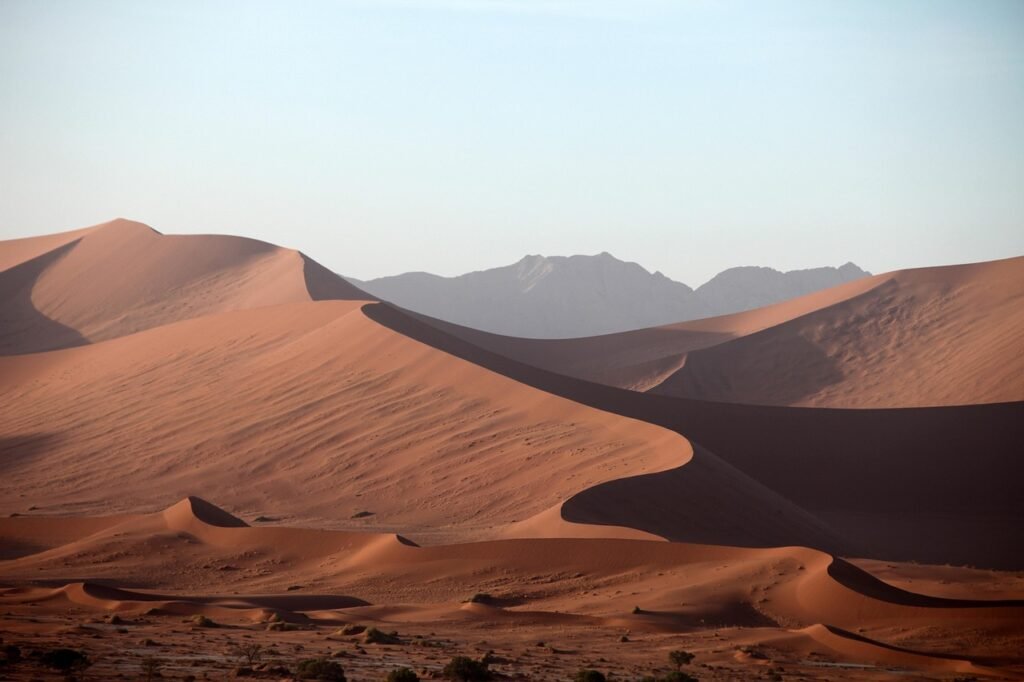
Namibia is a vast adventure playground in southwestern Africa, defined by surreal landscapes and an incredible sense of space. With only ~2.5 million people in an area larger than Texas, Namibia is the second least densely populated country on Earth (after Mongolia). For travelers, this means mile after mile of unspoiled desert, canyons, and savannah virtually to yourself. Namibia attracts around 1.6 million tourists per year, making it easy to find solitude under its famous bright blue skies. From towering sand dunes to abundant wildlife, Namibia is a dream for those seeking truly off-the-grid experiences.
The country’s most iconic feature is the Namib Desert, considered the world’s oldest desert at over 55 million years old. Here you’ll find the otherworldly Namib Sand Sea, which UNESCO describes as “the only coastal desert in the world with extensive dune fields shaped by fog”. At Sossusvlei, rust-orange dunes soar 1,000+ feet high (over 300 m) – climbing “Big Daddy,” one of the tallest, rewards you with panoramic views of rippling sands and the eerie Dead Vlei clay pan dotted with ancient dead acacia trees. The play of light at sunrise and sunset on these dunes is a photographer’s paradise. Despite the harsh climate, unique wildlife thrives: you might spot oryx, desert-adapted elephants, and even rare fog-harvesting beetles surviving in this arid environment.
Namibia’s natural wonders don’t end with deserts. The Skeleton Coast along the Atlantic is a windswept shore littered with shipwrecks and seal colonies – hauntingly beautiful in its emptiness. Inland, the dramatic Fish River Canyon is one of the largest canyons in the world, offering challenging treks along its 100-mile (160 km) length. For wildlife enthusiasts, Etosha National Park rivals more famous East African safaris. In Etosha’s vast salt pan and surrounding bush, you can watch elephants, giraffes, lions, rhinos, and more congregate at waterholes, often without another vehicle in sight. Namibia is also a haven for conservation: it was the first country to incorporate environmental protection into its constitution, and its community-run reserves (conservancies) are a model for sustainable tourism.
Beyond the scenery, part of Namibia’s magic is the night sky – with so little light pollution, the Milky Way blazes overhead like diamonds on black velvet. Many visitors recount the simple thrill of campfire evenings under the stars in places so remote you feel you have the planet to yourself. Yet despite its wildness, Namibia is traveler-friendly, boasting excellent roads (some say the best in Africa) and a stable democracy. Whether you’re sandboarding down dunes, tracking cheetahs with San bushmen guides, or just soaking in the silence of a desert sunset, Namibia delivers an off-the-beaten-path journey that stays with you forever.
Bolivia – High-Altitude Adventures in the Andes
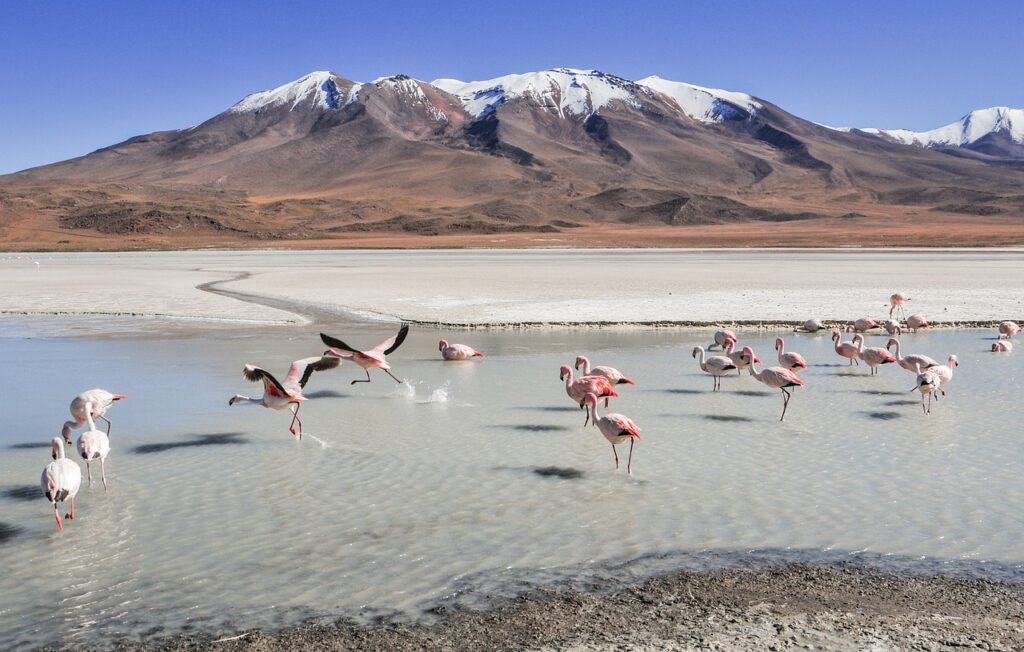
Bolivia is a country of extremes and superlatives, tucked in the heart of South America. From the soaring Andes to the steaming Amazon basin, Bolivia offers intrepid travelers a chance to experience Latin America at its most authentic and untamed. It remains quite under-visited – roughly 1.2 million international tourists in 2019 – in part due to its remote high-altitude locations. But those who venture here discover a rich indigenous culture and landscapes unlike anywhere else on Earth. At an average elevation of around 12,000 feet (3,660 m) on the Altiplano plateau, Bolivia will literally take your breath away.
Perhaps Bolivia’s most famous sight is the Salar de Uyuni, the world’s largest salt flat. This dazzling expanse of white salt crust covers some 10,582 square kilometers (4,086 sq mi) – an area larger than Puerto Rico. In the dry season, the Salar looks like a blinding white desert; in the wet season (January-March), a thin layer of water creates a perfect mirror reflecting the sky, an effect so surreal it’s often called “the world’s largest mirror.” Travelers cross the salar by 4×4 jeep, stopping at cacti-covered islands and salt hotels, and witnessing mind-bending optical illusions in the endless flatness. Many tours continue to the other wild wonders of Bolivia’s southwest: crimson-red lakes filled with flamingos, geyser fields, and volcanic hot springs, all set against the backdrop of snow-capped volcanoes on the Chilean border.
Bolivia’s cultural tapestry is equally remarkable. The country has a majority indigenous population, and its 2009 constitution recognizes 36 indigenous languages as official alongside Spanish. This heritage is on full display in cities like La Paz (the de facto capital and highest capital city in the world at 3,640 m). In La Paz’s markets, Aymara women in traditional bowler hats sell everything from handwoven textiles to llama fetuses (used as offerings in Andean spiritual rituals). Time your visit right and you might witness festivals such as Gran Poder or the Oruro Carnival, where dancers in elaborate devil costumes parade through streets in a riot of color and music. Bolivia’s historic mining city Potosí, once one of the richest cities on earth for its silver, offers a poignant glimpse into colonial history and local resilience. Meanwhile, on the serene shores of Lake Titicaca (the world’s highest navigable lake), indigenous communities maintain traditional ways of life amid breathtaking scenery of deep-blue waters and sky-piercing peaks.
Travel in Bolivia can be challenging – the altitude is high, nights can be cold, and infrastructure is basic outside main cities – but for many, these challenges are part of the adventure. Whether you’re biking down the infamous “Death Road” from the Andes into the jungle, exploring the Amazonian pampas near Rurrenabaque (spotting pink river dolphins and caimans), or climbing a 6,000-meter Andean summit, Bolivia will test and reward you. It remains one of the few places where you can truly get off the tourist trail and engage with cultures and ecosystems in a raw, unfiltered way. For those seeking genuine adventure and cultural immersion, Bolivia stands out as an off-the-beaten-path treasure in South America.
Nicaragua – The Land of Lakes and Volcanoes
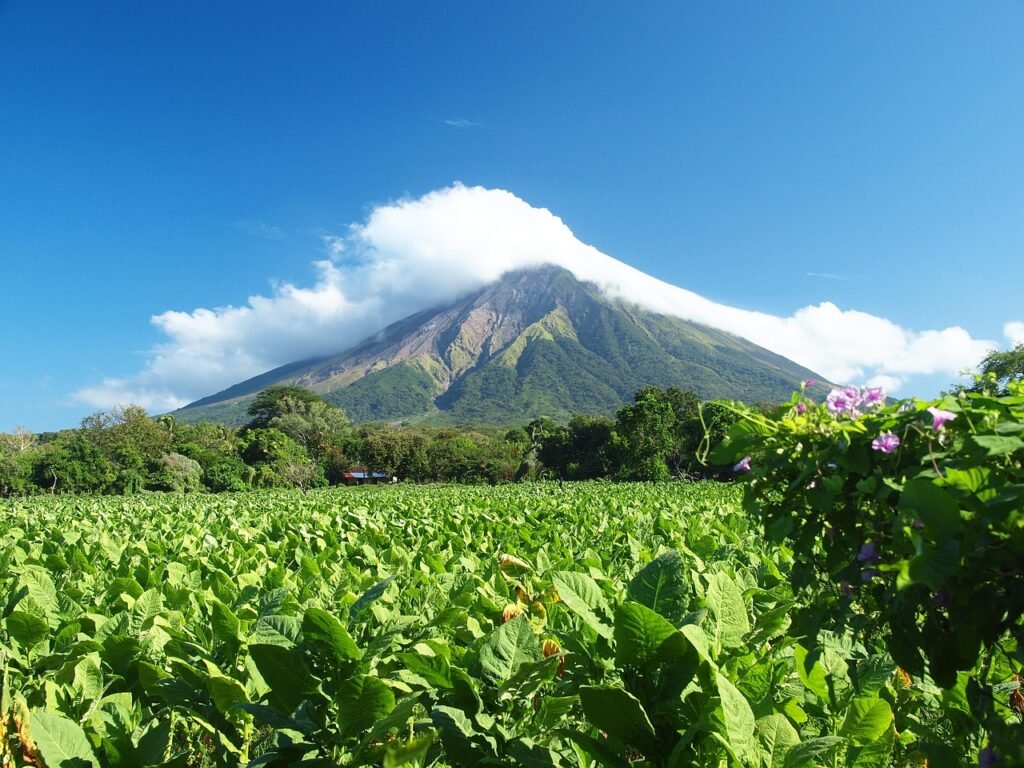
Nicaragua, in the heart of Central America, is a country emerging from a turbulent past into a bright future for adventurous travel. Nicknamed the “land of lakes and volcanoes”, Nicaragua offers a lush mix of volcano-studded landscapes, colonial towns, and rainforests – all with a laid-back vibe and far fewer tourists than its neighbor Costa Rica. In 2019 about 1.5 million travelers visited Nicaragua, a modest number that means you can still have a Pacific surf beach or a cloud forest hike nearly to yourself.
The country’s dramatic geography is defined by a chain of 19 active volcanoes running down its Pacific side. Adventurous visitors can board down the ash slope of Cerro Negro (yes, volcano “surfing” on a wooden sled is a popular thrill!), or peer into the lava lake of Masaya Volcano – one of the few places on Earth where you can see molten lava glowing in an open crater at night. Towering above them all is San Cristóbal (7,730 ft / 2,350 m), the highest volcano in Nicaragua, often puffing smoke from its perfect cone. Amid these fiery peaks lie Nicaragua’s great lakes. Lake Nicaragua (Cocibolca) is the largest lake in Central America at about 8,157 km², so vast the Spanish called it “El Mar Dulce” (the Sweet Sea). In its waters are freshwater sharks and the enchanting Ometepe Island, formed by two volcanoes rising from the lake. Ometepe’s villages, petroglyphs, and coffee farms make it a magical microcosm of Nicaragua’s nature and culture, accessible by a mellow ferry ride yet still largely unspoiled by mass tourism.
Nicaragua’s cities add to its offbeat appeal. The graceful colonial city of Granada sits on Lake Nicaragua’s shore, with colorful Spanish-era buildings, horse-drawn carriages, and a sleepy charm that feels like a step back in time. Nearby León, the intellectual and revolutionary heart of the country, boasts Central America’s largest cathedral (a UNESCO World Heritage Site) and vibrant murals celebrating the Sandinista movement. Unlike more touristic capitals, Nicaragua’s capital Managua is quirky and nonconventional – lacking a true downtown due to a 1972 earthquake, it sprawls around a lagoon with markets, revolutionary monuments, and even ruins of its old cathedral as reminders of its history.
Nicaraguans are exceptionally friendly and proud to show visitors their country’s beauty. You might be invited to try a home-cooked meal of gallo pinto (rice and beans) or to join a family gathering during the annual La Purísima festivities. And nature is never far: Nicaragua also shelters the Bosawás Biosphere Reserve, part of the second-largest rainforest in the Americas after the Amazon. Ecotourism is growing, from spotting howler monkeys and colorful birds in the cloud forests of Selva Negra to diving in the Caribbean Corn Islands with their coral reefs. Free of the tourist hordes that crowd some of its neighbors, Nicaragua feels like a secret you’ve been let in on – a place where you can climb a volcano in the morning, surf Pacific waves at sunset, and swap stories with locals over rum at day’s end, all without breaking the bank. It’s Central America’s best-kept offbeat secret.
Laos – Southeast Asia’s Sleepy Treasure
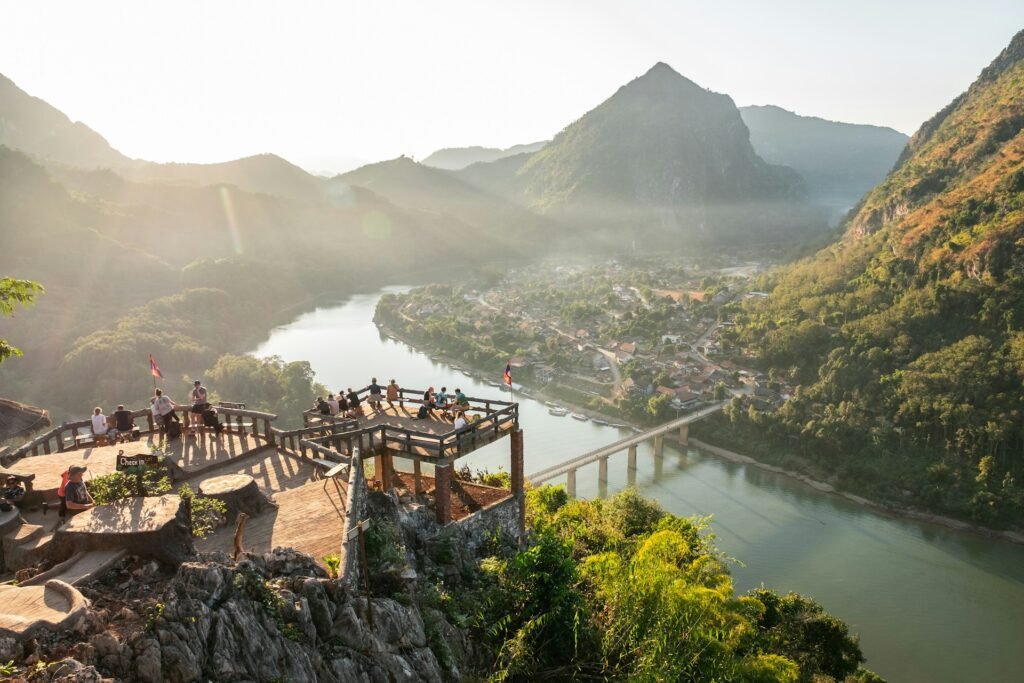
Laos is often overlooked in favor of its bustling neighbors Thailand and Vietnam, but this landlocked nation is a serene haven for travelers seeking a slower, soul-enriching journey. With just around 4.8 million international visitors in 2019 (compared to Thailand’s 39.8 million the same year), Laos remains wonderfully uncrowded and true to itself. Time seems to move slower here – the country famously follows “Bor Pen Nyang” (no worries) time. Misty mountains, gilded temples, and the mighty Mekong River define the landscape, while French colonial traces add old-world charm to the towns. Laos invites you to relax and explore at a gentle pace, discovering hidden gems far off the typical Southeast Asia backpacker trail.
The crown jewel of Laos is Luang Prabang, a UNESCO World Heritage town where tradition and elegance meet. Nestled at the confluence of two rivers and surrounded by green hills, Luang Prabang enchants visitors with its tranquil streets lined by French-Indochinese villas and dozens of ornate Buddhist monasteries. At dawn, the quiet is broken only by the soft shuffling of monks collecting alms from rows of kneeling villagers – a daily ritual that visitors can respectfully observe. In the cool of the evening, the town’s night market comes alive with hill-tribe textiles and sizzling street food like Lao barbecue and coconut pancakes. Outside the town are natural wonders like the Kuang Si Waterfalls, where turquoise pools cascade through the jungle, offering an idyllic swimming spot.
Laos’s natural beauty and cultural sites extend across the country. In the north, forested mountains and rivers make for excellent trekking and eco-tourism; you can visit remote villages of the Hmong or Khmu people, accessible via hike or riverboat, and experience homestays that directly support these communities. The mysterious Plain of Jars in Xieng Khouang features fields scattered with ancient massive stone jars – archaeologists believe they were used 2,000 years ago, perhaps for burials, but their true purpose remains an enigma. (The Plain of Jars was finally designated a UNESCO World Heritage Site in 2019, highlighting its global significance.) In the south, the Mekong fans out into a labyrinth of channels and islets known as Si Phan Don or “4,000 Islands,” where the river becomes so wide it feels like a lake. Here, life on islands like Don Khon and Don Det is blissfully lazy: ride a bicycle past rice paddies, watch rare Irrawaddy dolphins at sunset, and fall asleep to the sound of crickets, far from neon lights or Wi-Fi signals.
One of Laos’s charms is its simplicity. Infrastructure is basic in parts, and outside major spots like Luang Prabang or the capital Vientiane, English isn’t widely spoken – yet this is part of the appeal for many. You’ll find genuine interactions with locals, whether sharing a laugh over a game of petanque (a sport left from French days) or learning to weave silk from a village artisan. Laos is also notably safe and welcoming. The cuisine, while less famous internationally, is fresh and delicious: think fragrant larb salads of minced meat with herbs, sticky rice served in woven baskets, and French-inspired baguette sandwiches sold streetside. Don’t miss trying lao-lao, the local rice whiskey, often shared liberally by Lao hosts in the spirit of hospitality!
In many ways, Laos feels like a journey back to a more unspoiled Southeast Asia of decades past. There are no skyscrapers or superhighways – just jungle-clad hills, saffron-robed monks, and the steady flow of the Mekong. If your ideal travel involves wandering quiet temple courtyards, kayaking past karst cliffs, and watching the sun sink into the river with hardly another tourist in sight, then Laos should be high on your list. It is a true off-the-beaten-path treasure, offering peace and profound beauty to those who take the time to explore it.
FAQ
Why travel to off-the-beaten-path countries instead of popular destinations?
Off-the-beaten-path countries offer a more authentic and uncrowded experience. You can connect with local culture on a deeper level because there are fewer tourists and often more genuine interactions with residents. These destinations also tend to be less commercialized and more affordable. For example, in Kyrgyzstan or Laos you can explore stunning landscapes virtually alone, whereas famous spots in Europe or Thailand might be packed with visitors. Finally, by visiting lesser-known countries, you help spread the economic benefits of tourism more evenly and avoid contributing to overtourism in already popular places.
Are off-the-beaten-path countries safe for travelers?
Generally yes – many offbeat countries like Oman, Georgia, or Namibia are quite safe for tourists, often safer than their reputations might suggest. However, it’s important to do research on each country. Safety can vary within a country (for example, parts of Bolivia’s big cities require standard caution, but rural areas are very welcoming). Always check the latest travel advisories. In practice, travelers often report feeling safe and comfortable in these destinations due to friendly locals and low crime rates in tourist areas. Basic precautions (like securing valuables and respecting local customs) go a long way. In summary, don’t let fear deter you: with preparation and common sense, offbeat travel can be very safe and rewarding.
What should I pack or prepare for travel to remote countries?
When heading to less-touristed countries, it’s wise to pack for versatility and self-sufficiency. Bring appropriate clothing for the climate (e.g. layers for high-altitude Bolivia, modest attire for Oman, rain gear for tropical Laos). Good walking shoes are a must since you’ll likely do more hiking and exploring outdoors. Medications or a small first aid kit are useful, as pharmacies might be scarce in remote areas. Learn a few basic phrases in the local language – greetings or “thank you” – as English may not be widely spoken. Importantly, carry some cash (in small denominations) since ATMs can be rare outside cities. And don’t forget travel insurance that covers adventure activities if you plan to trek, dive, etc. Essentially, prepare as if you won’t have easy access to supplies, and you’ll be set for an offbeat adventure.
How do I get around in these countries with limited infrastructure?
Transportation varies by country, but generally you’ll find creative local solutions even where infrastructure is basic. In many places, long-distance buses or shared minibuses (sometimes called matatus, marshrutkas, etc.) are the main way locals travel, and they’re an affordable way for tourists too – just be prepared for less schedule certainty and comfort. Some countries like Namibia or Oman are best explored by renting a car (or 4×4) for maximum flexibility – roads can be empty and scenic, but you may need GPS and spare fuel in remote areas. In smaller countries like Albania or Laos, hiring a local driver or joining small group tours can reach offbeat spots without public transit. Don’t overlook trains if available (e.g. the new Laos-China railway connects parts of Laos). And of course, within towns, options range from tuk-tuks and motorcycle taxis to simply walking. It can be slower going than in developed nations, but the journey often becomes part of the adventure!
Will there be adequate amenities (hotels, internet, etc.) in such destinations?
Amenities are improving in off-the-beaten-path countries, but expect them to be simpler and scarcer than in touristy areas. You can usually find guesthouses, eco-lodges or small hotels in most regional hubs or near major sights – they might be family-run with basic but clean facilities. In very remote spots (e.g. camping under Kyrgyzstan’s mountain stars or staying in a village homestay in Nicaragua), accommodation can be rustic with limited electricity or hot water. Internet and Wi-Fi are often available in cities and larger towns (many cafes in Luang Prabang or Tirana have Wi-Fi, for instance), but connectivity might be slow or unreliable once you go into rural areas. It’s a good idea to buy a local SIM card for data if you need to be connected. Food options will revolve around local cuisine, which is usually delicious and organic (though you won’t find fast-food chains in rural Laos, for example). In summary, expect modest comfort – part of the charm is unplugging a bit – but rest assured that the essentials for travelers do exist, even if sometimes in a very down-to-earth fashion.
What Did We Learn Today?
- Off-the-beaten-path countries offer authentic experiences with far fewer tourists – for example, Laos gets barely 1/10th the visitors of neighboring Thailand.
- These destinations boast world-class sights: Bolivia’s Salar de Uyuni is the largest salt flat on Earth, and Oman’s frankincense trail preserves a unique slice of ancient history.
- Many hidden-gem countries are geographical wonders: Kyrgyzstan is 90% mountainous, and Namibia’s Namib Desert is one of the planet’s oldest and driest ecosystems.
- Traveling off the beaten path often means encountering vibrant local cultures – from Albania’s Ottoman-era towns and alpine traditions to Bolivia’s indigenous languages (36 official languages!) still thriving today.
- With some preparation and open-mindedness, offbeat destinations can be very rewarding. They are generally safe, budget-friendly, and give you the thrill of exploration – the feeling of discovering a secret corner of the world that few others have seen.





